Story
- Why Models?
- Background
- Motivation
- Software
- Model Library
- Calibration
- Illustrations
- Open-Source Tools
Canadian Institute for Health Information – 2024-10-10
macpan2 project is a more versatile public health modelling tool being actively developed to address these challenges.macpan2’s library of predefined models as starting points.macpan2 employs formal mathematical optimization for the efficient calibration of model parameters to data.macpan2.Why even bother at all with modelling?
(in applied, non-academic, data-informed, infectious disease, public health work)
McMasterPandemic was developed for COVID-19 modelling and forecasting.
McMasterPandemicMcMasterPandemic

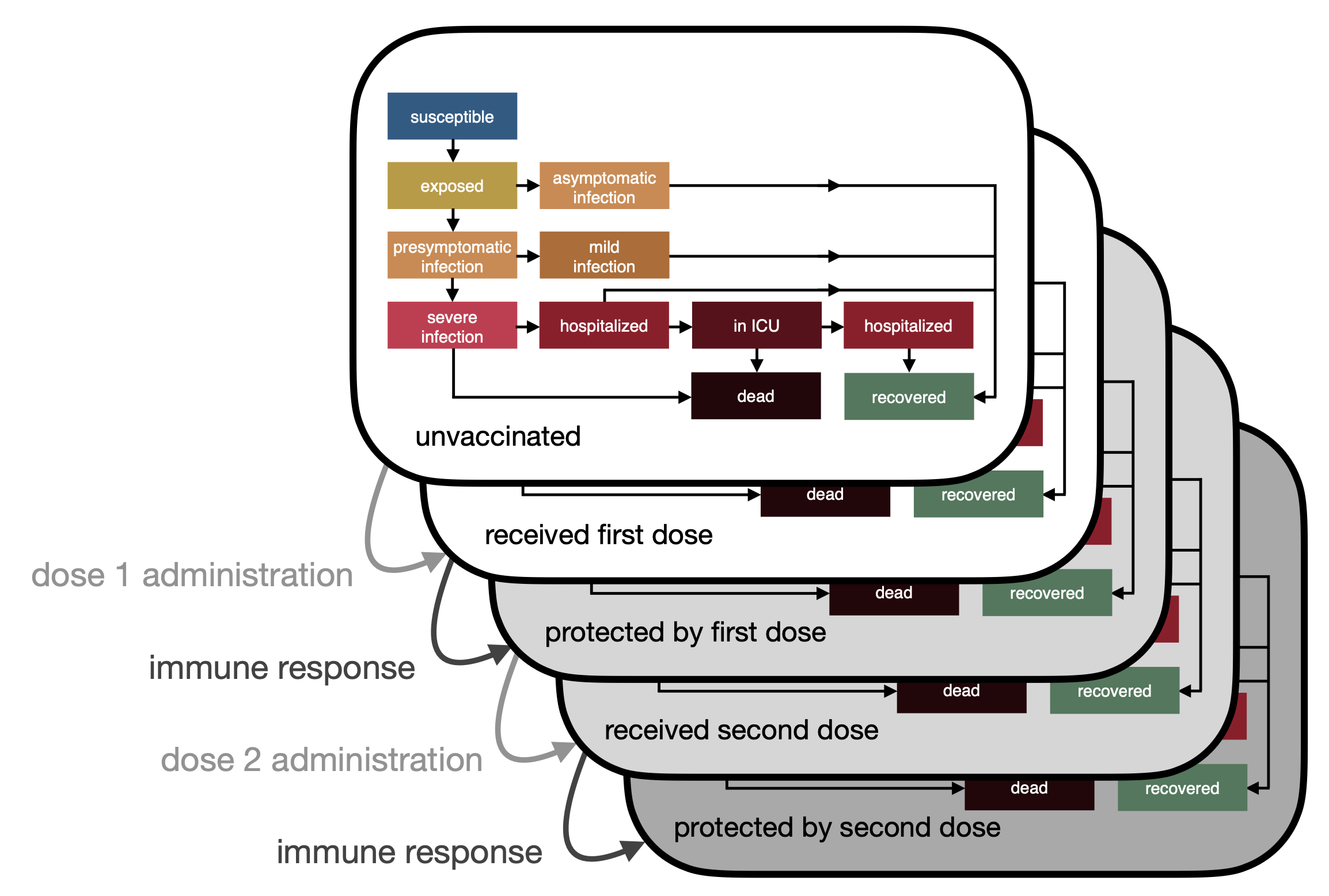
The urgency of producing regular forecasts during the pandemic impeded software development.
Mechanistic modelling
Fast simulations and calibrations
Statistically principled
Functionality-rich
Modular model building
Easy to use
Mechanistic modelling : Prediction is not enough. Must explain why.
Fast simulations and calibrations
Statistically principled
Functionality-rich
Modular model building
Easy to use
Mechanistic modelling
Fast simulations and calibrations : Computation cannot hold back thinking.
Statistically principled
Functionality-rich
Modular model building
Easy to use
Mechanistic modelling
Fast simulations and calibrations
Statistically principled : Uncertainty estimation (confidence intervals, priors)
Functionality-rich
Modular model building
Easy to use
Mechanistic modelling
Fast simulations and calibrations
Statistically principled
Functionality-rich : “But I need to use fancy modelling idea X.”
Modular model building
Easy to use
Mechanistic modelling
Fast simulations and calibrations
Statistically principled
Functionality-rich
Modular model building : “Need to stratify my in-use MPox model by age.”
Easy to use
Mechanistic modelling
Fast simulations and calibrations
Statistically principled
Functionality-rich
Modular model building
Easy to use : “Why would I switch from the tool I already know how to use?”
Mechanistic modelling
Fast simulations and calibrations
Statistically principled
Functionality-rich
Modular model building
Easy to use
To address these challenges, the macpan2 project was launched to create a more versatile public health modelling tool, integrating lessons learned from the pandemic.
+-----------+------+-------------------------------------------------------+
| nickname | year | description |
+-----------+------+-------------------------------------------------------+
| macpan1 | 2020 | original covid models in R engine |
| macpan1.5 | 2021 | fast C++ engine and flexibility for VOC modelling |
| macpan2 | 2023 | general architecture to implement the lessons learned |
| macpan2 | 2024 | simple interface to general architecture |
+-----------+------+-------------------------------------------------------+Mechanistic modelling
Fast simulations and calibrations
Statistically principled
Functionality-rich
Modular model building
Easy to use
Why Not Just Use AI for Everything?

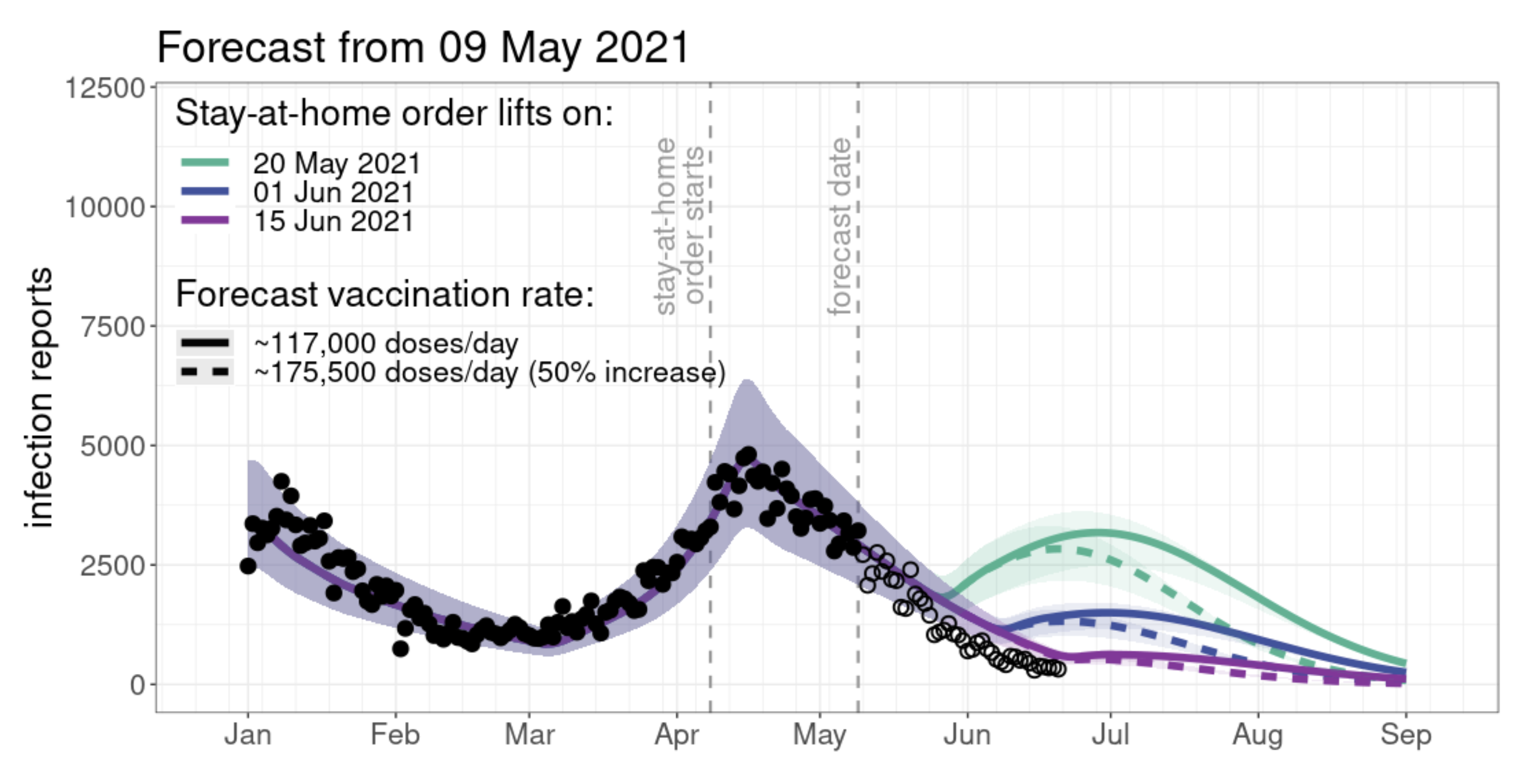
Mechanistic modelling
Fast simulations and calibrations
Statistically principled
Functionality-rich
Modular model building
Easy to use
Why is it important? What goes into a picture like this?

Mechanistic modelling
Fast simulations and calibrations
Statistically principled
Functionality-rich
Modular model building
Easy to use
R codeS : number of susceptible individualsI : number of infectious individualsN : total population size
Specifications allow us to draw flow diagrams.
\[ \begin{align} \text{infection} & = S \times \beta I / N \end{align} \]
\[ \begin{align} \text{infection} & = S \times \beta I / N \\ \frac{dS}{dt} & = -\text{infection} \\ \frac{dI}{dt} & = +\text{infection} \\ \end{align} \]
ggplot2)\[ \begin{align} \frac{dS}{dt} & = -\text{infection} \\ \frac{dI}{dt} & = -\text{recovery}+\text{infection} \\ \frac{dR}{dt} & = +\text{recovery} \\ \end{align} \]

We illustrate macpan2’s application with some examples.

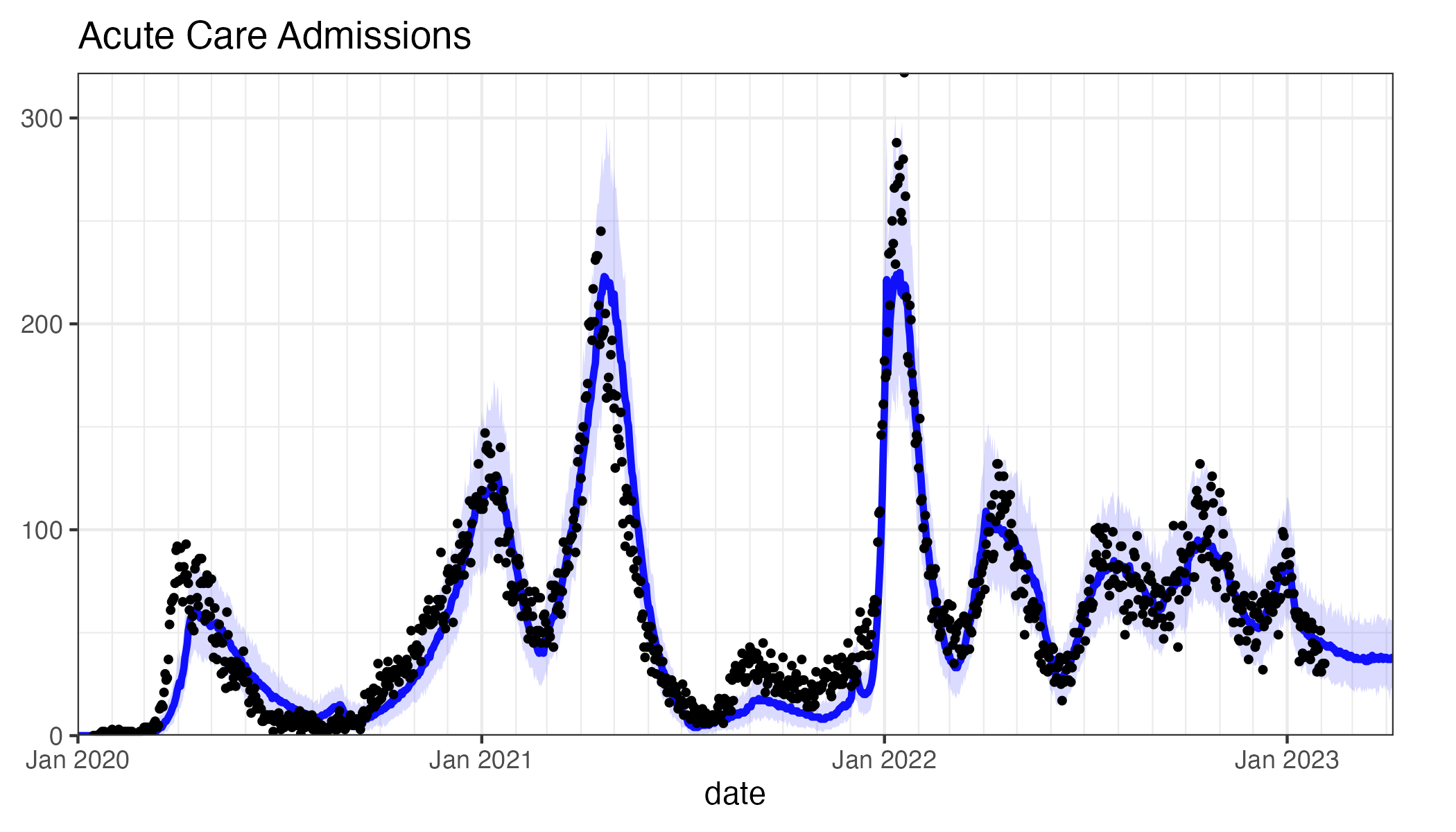
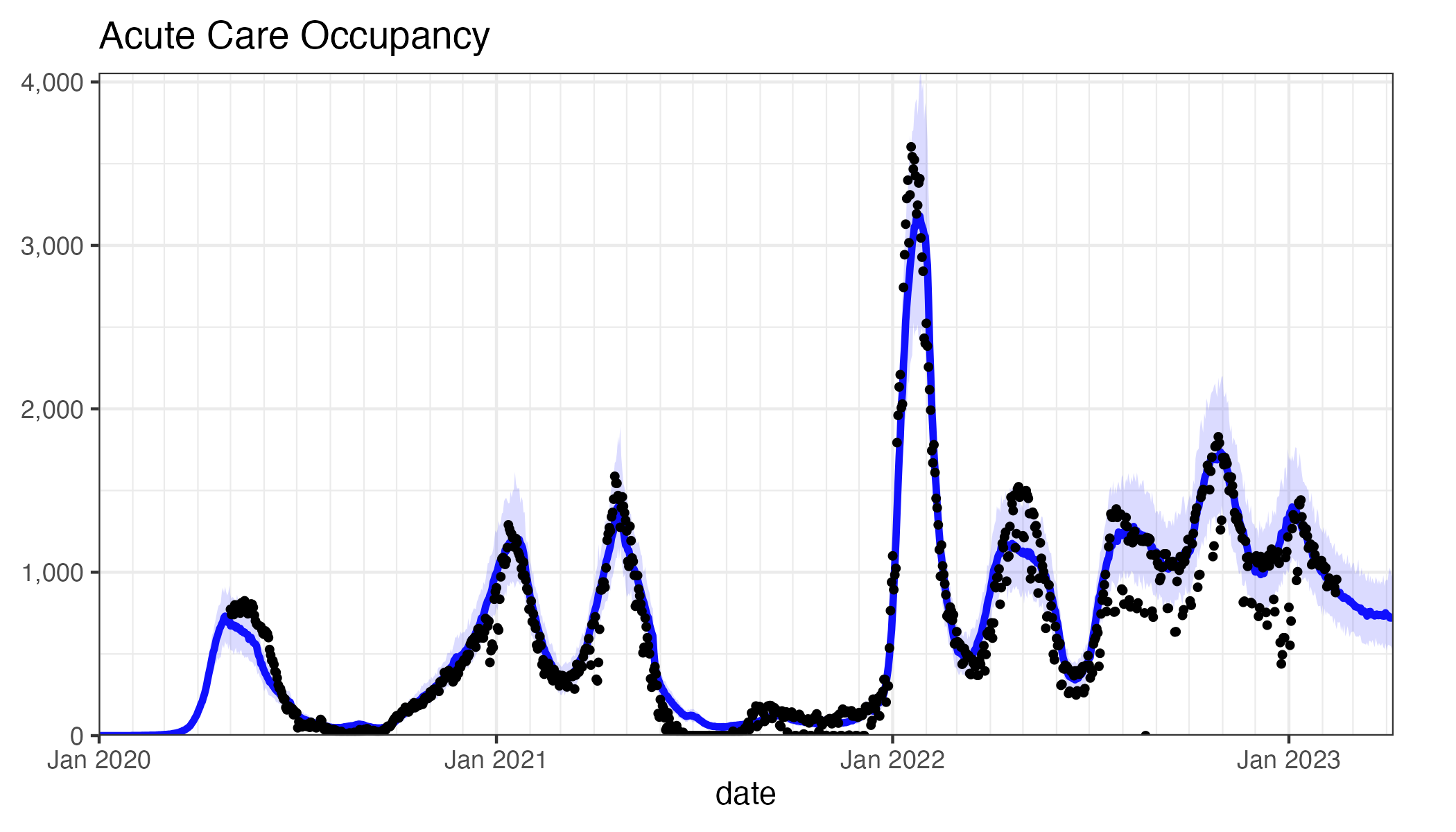
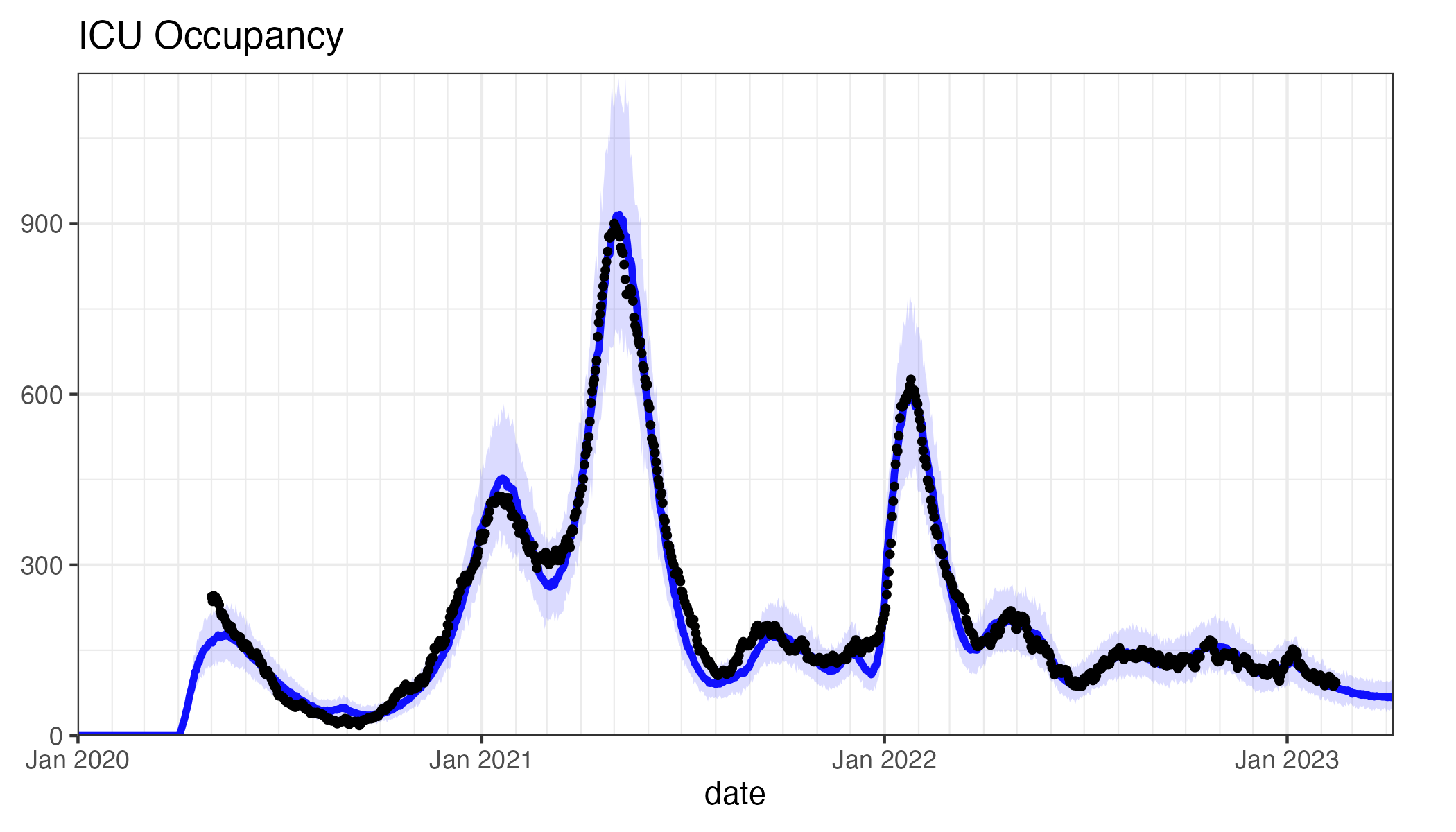



macpan23.\[ \text{force of infection} = \text{awareness factor} \times \frac{\beta I}{N} \]
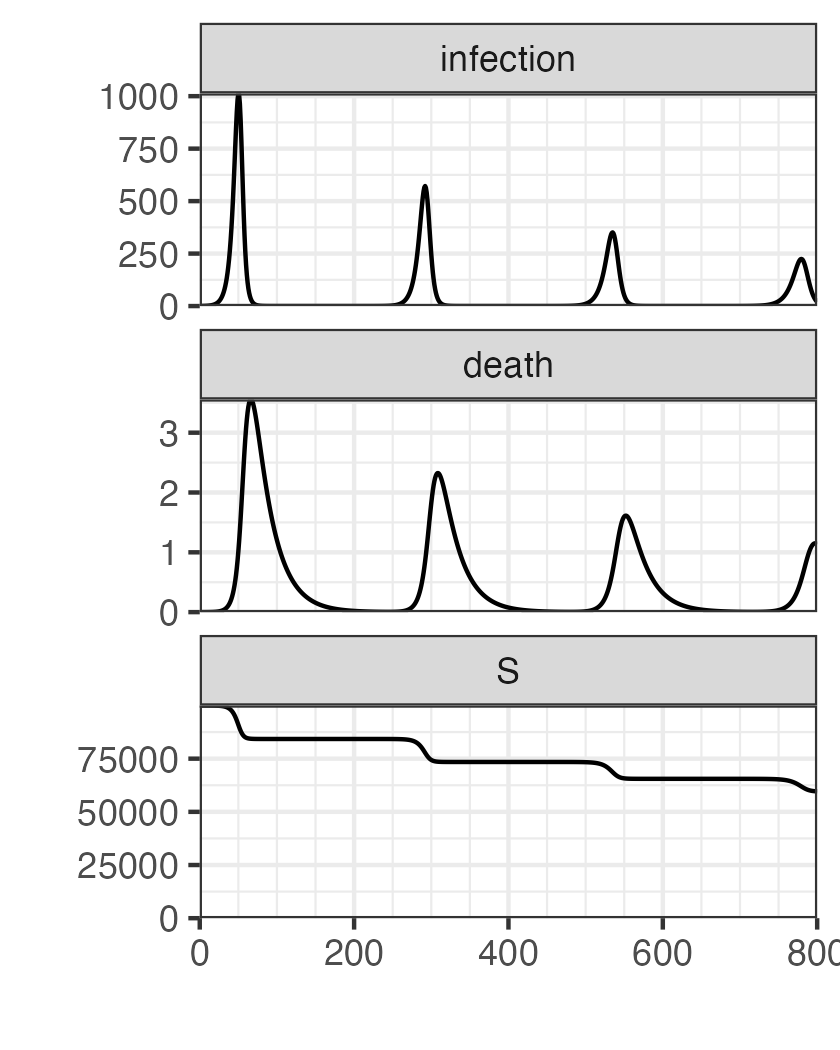
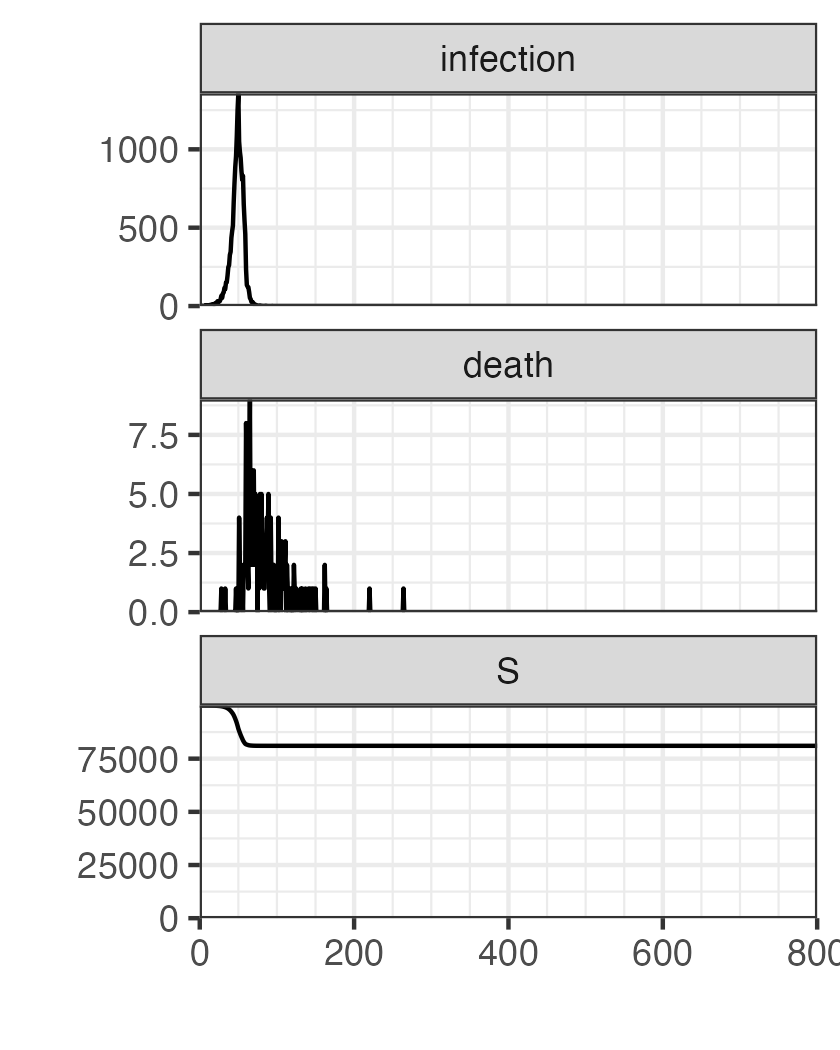
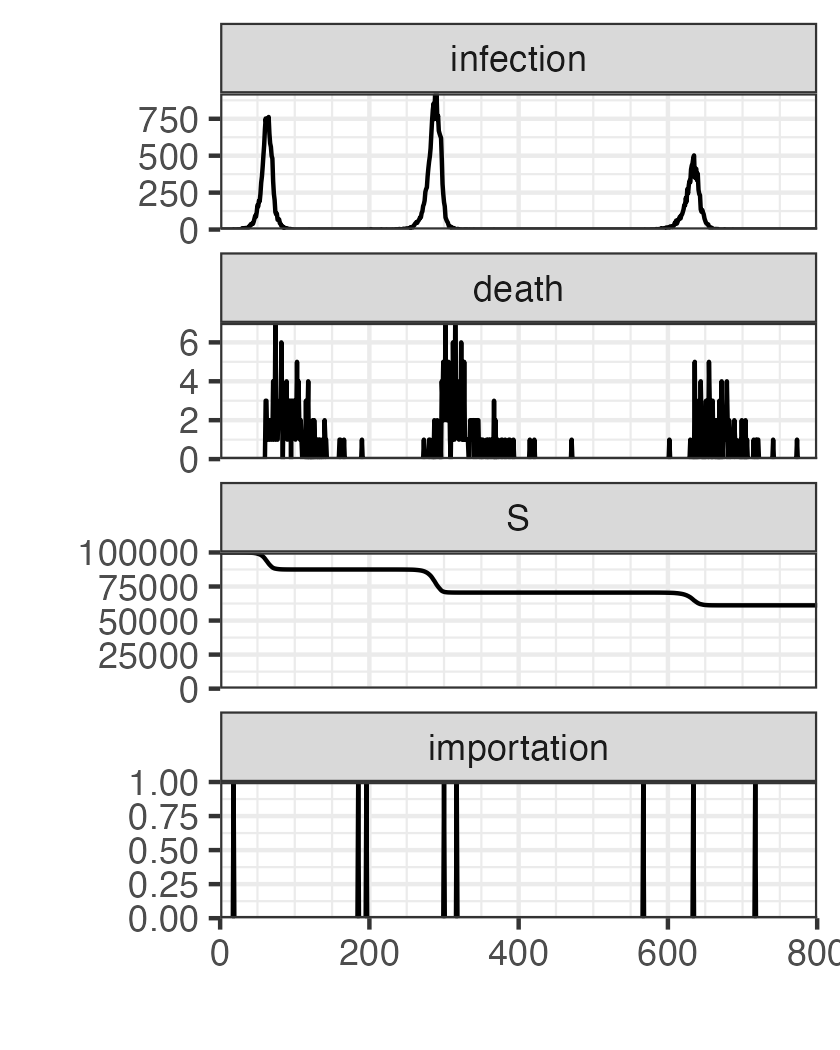
The set of open-source tools available for epidemiologists to build forecasting models is improving and expanding.
macpan2macpan2 project is part of this effort.macpan2 (Interested?)